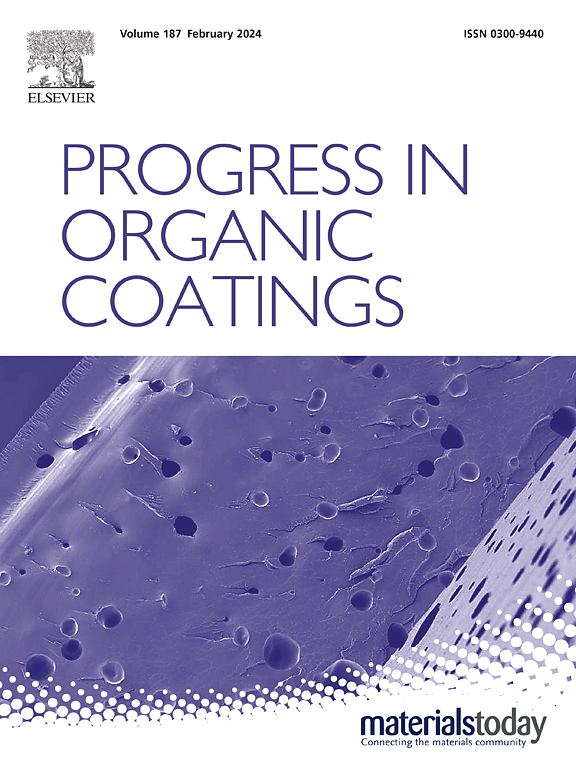“Kill two birds with one stone” strategy to attain intelligent early warning anti-corrosion coating with a dual response mechanism
IF 6.5
2区 材料科学
Q1 CHEMISTRY, APPLIED
引用次数: 0
Abstract
Corrosion of metal materials has become a major challenge for marine facilities. Traditional anti-corrosion coatings cannot detect local corrosion in time, leading to significant maintenance costs. Therefore, providing an intelligent response performance to traditional anticorrosive coatings is essential. This study proposes an intelligent epoxy anticorrosion system based on the dual-mode response mechanism of visual color development and fluorescence quenching. The molecular structure was designed with the combination of 1,10-phenanthroline-5-amine (APhen) and E44 epoxy resin through a simple ring-opening reaction to obtain modified epoxy resin (EAPhen). The intelligent responsiveness of the epoxy resin was achieved through a simple and efficient complexation reaction. Subsequently, under the curing crosslinking of polyether amine D400, an epoxy resin anticorrosive coating (EAD-x) with excellent mechanical properties and visual response to corrosion products (Fe2+) was prepared. Furthermore, the high crosslinking density and dense three-dimensional network structure provided EAD-4 coating with good physical barrier properties. Additionally, APhen and local corrosion product Fe2+ were able to form a passivation layer protective film after a complexing reaction. The synergistic effect of these mechanisms gave the epoxy resin excellent corrosion resistance. After 7 days of immersion in 3.5 wt% NaCl solution, the |Z|0.01 Hz value of the EAD-4 coating remained as high as 2.56 × 1011 Ω•cm2. Moreover, due to the “pinning” effect of E44, the adhesion level of EAD-4 coating to the substrate reached 5 B. In conclusion, this study provides a concept for realizing the visual self-warning function of local corrosion which is expected to offer a more reliable and efficient anti-corrosion protection scheme for marine engineering facilities while promoting sustainable development in this field.

求助全文
约1分钟内获得全文
求助全文
来源期刊

Progress in Organic Coatings
工程技术-材料科学:膜
CiteScore
11.40
自引率
15.20%
发文量
577
审稿时长
48 days
期刊介绍:
The aim of this international journal is to analyse and publicise the progress and current state of knowledge in the field of organic coatings and related materials. The Editors and the Editorial Board members will solicit both review and research papers from academic and industrial scientists who are actively engaged in research and development or, in the case of review papers, have extensive experience in the subject to be reviewed. Unsolicited manuscripts will be accepted if they meet the journal''s requirements. The journal publishes papers dealing with such subjects as:
• Chemical, physical and technological properties of organic coatings and related materials
• Problems and methods of preparation, manufacture and application of these materials
• Performance, testing and analysis.
文献相关原料
公司名称
产品信息
阿拉丁
1,10-Phenanthrolin-5-amine (APhen)
 求助内容:
求助内容: 应助结果提醒方式:
应助结果提醒方式:


